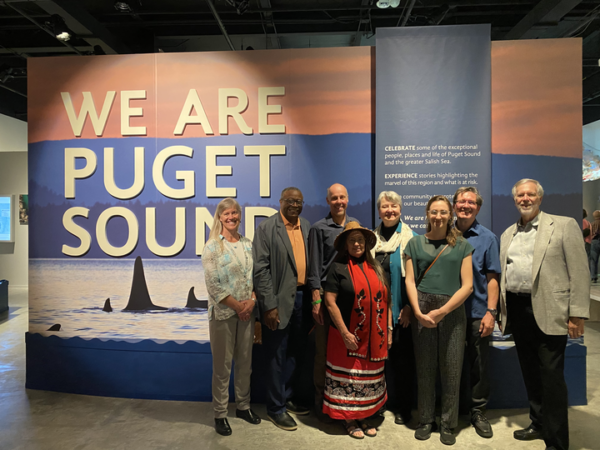FOR IMMEDIATE RELEASE, December 18, 2019
Keeping ship and boat sewage out of Sound, key solution to restoring one of the nation’s largest inland waterbodies
WASHINGTON, D.C. – The U.S. District Court in Washington, D.C., denied a move by the American Waterways Operators and the U.S. Environmental Protection Agency to halt the implementation of a No Discharge Zone (NDZ) for Puget Sound in Washington state. The NDZ prohibits ships and boats from discharging raw or partially treated sewage across the 2,300 square miles of marine waters as well as contiguous waters around Lake Washington and Lake Union. Trump’s EPA tried to take back its signoff of the NDZ to reconsider compliance costs to industry, and as the court put it, “take a second bite at the apple.”
Through this case, Trump EPA officials had attempted to undermine the protections of the Clean Water Act by reopening Washington State’s cost-benefit analysis of the NDZ. That analysis took years of work with public stakeholders, including environmental organizations and American Waterways Operators. By taking it back, EPA would have done its own analysis behind closed doors, compelled by industry-supplied cost estimates.
“This is a win that should be celebrated far outside Washington state,” said Mindy Roberts Puget Sound Program Director with Washington Environmental Council and Washington Conservation Voters. “The EPA under this administration has tried time and again to undermine our foundational environmental laws from the inside. This ruling stops them in their tracks, not only to protect Puget Sound’s waters but all waters protected by the Clean Water Act.”
Sewage contains bacteria and other pathogens that threaten shellfish beds, animal life, and public health, especially in communities that subsist on local fish. Within No Discharge Zone boundaries, boaters are required to hold sewage on board their vessels for disposal at pump-out facilities or outside the zone’s boundaries. Lobbyists for the tugboat industry attempted to undermine the state-designated rule by appealing to Trump’s EPA. With this ruling, Puget Sound now joins more than 90 other Zones around the country, including in the Great Lakes and the entire California coast. It is the first in Washington state.
“Washington state has a long road to recover Puget Sound, restore salmon runs, and protect our Southern Resident orcas,” said Chris Rilling, Executive Director of Puget Soundkeeper. “But we have to start by not making the problem worse. A No Discharge Zone is a critical common sense solution that we look forward to finally put in place to protect our shared waters.”
“Washington’s waters are far too precious and important to allow the Trump Administration to try to muddy them,” said Verner Wilson, senior oceans campaigner at Friends of the Earth. The court’s ruling should put a stop to this ridiculous lawsuit to help protect Puget Sound.”
“Puget Sound is one of the nation’s environmental and economic crown jewels. The Court made the right decision by not allowing the Trump administration to undermine a key protection for people and the ecosystem,” added Paulo Palugod, staff attorney for Earthjustice in Seattle, WA.
See Washington State Department of Ecology’s full statement on this ruling here.
###
Additional details about No Discharge Zone:
The vast majority of commercial and recreational boats already comply with this rule. Over 100 pumpout stations serve the region, and provide low- or no-cost convenient service. Free adapters are offered for recreational vessels to connect with pumpouts around the region.
Department of Ecology released a draft petition for the No Discharge Zone in 2014 after two years of stakeholder engagement with industry groups, environmental organizations, government agencies, and the public, drawing over 25,000 comments in support. Another two years of extensive stakeholder engagement led to the final petition to the US Environmental Protection Agency in July 2016. In February 2017, EPA confirmed that sewage pumpout facilities are adequate and available to serve commercial and recreational vessels, after receiving over 40,000 comments in support. Some commercial vessels have five years to comply so that they can upgrade their sewage systems.



